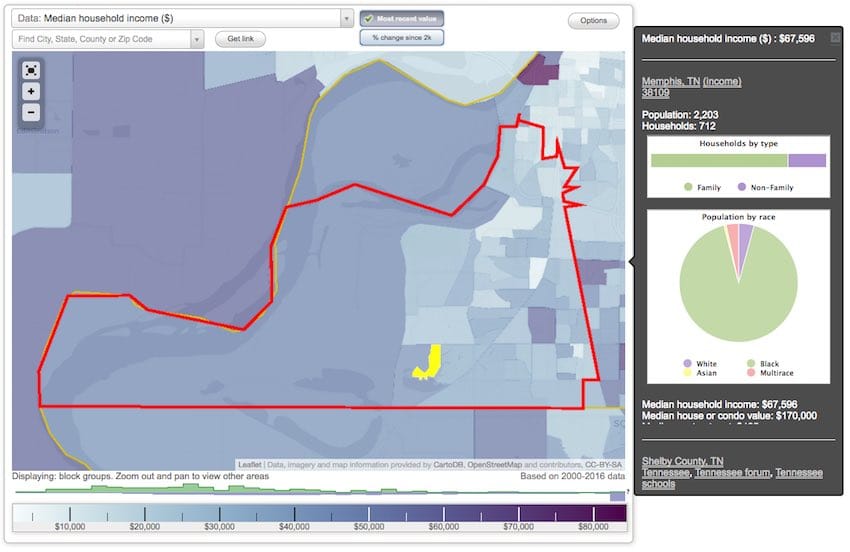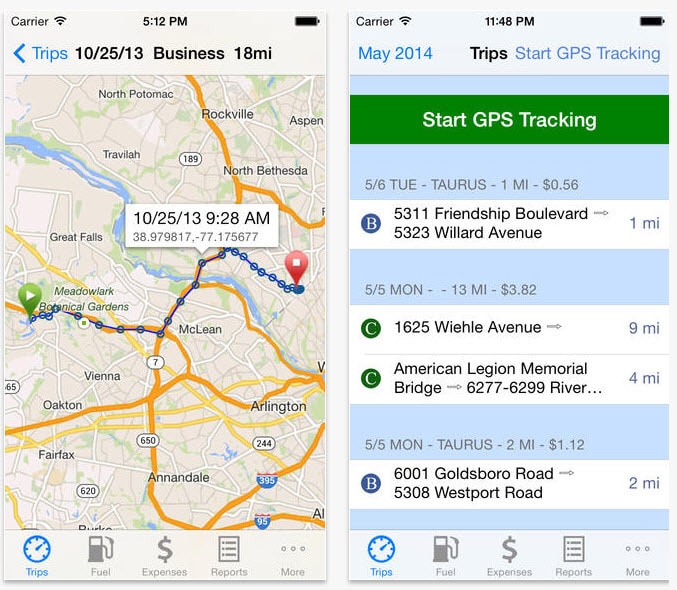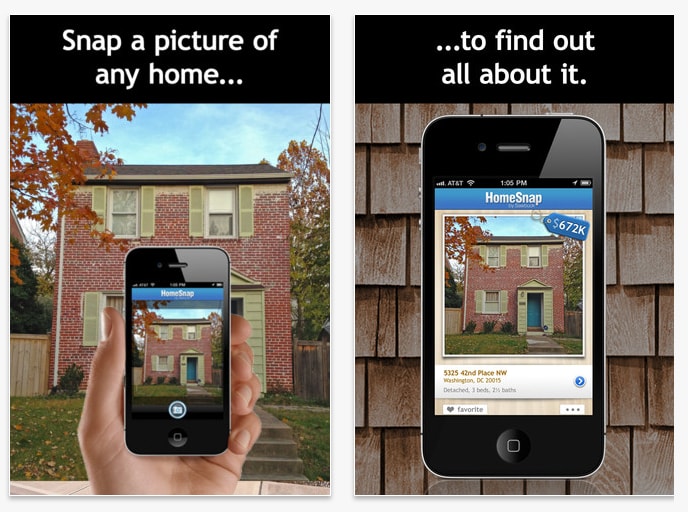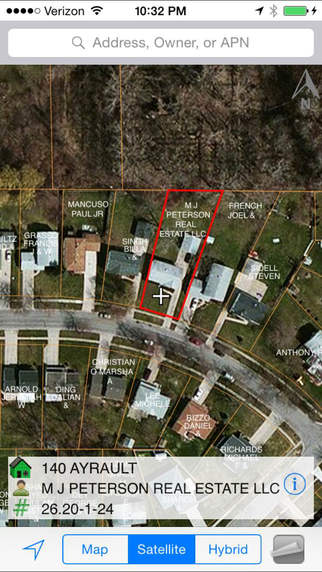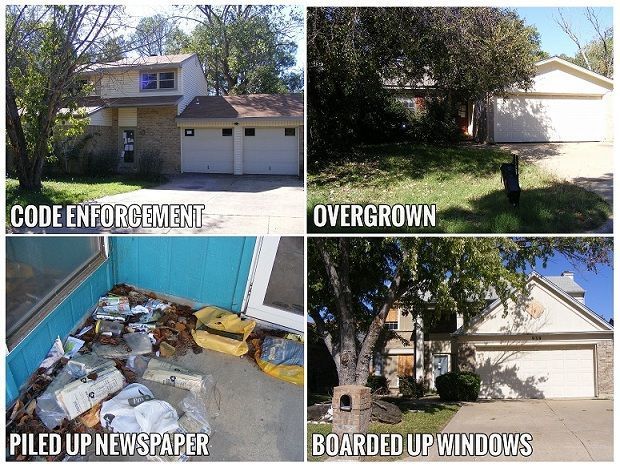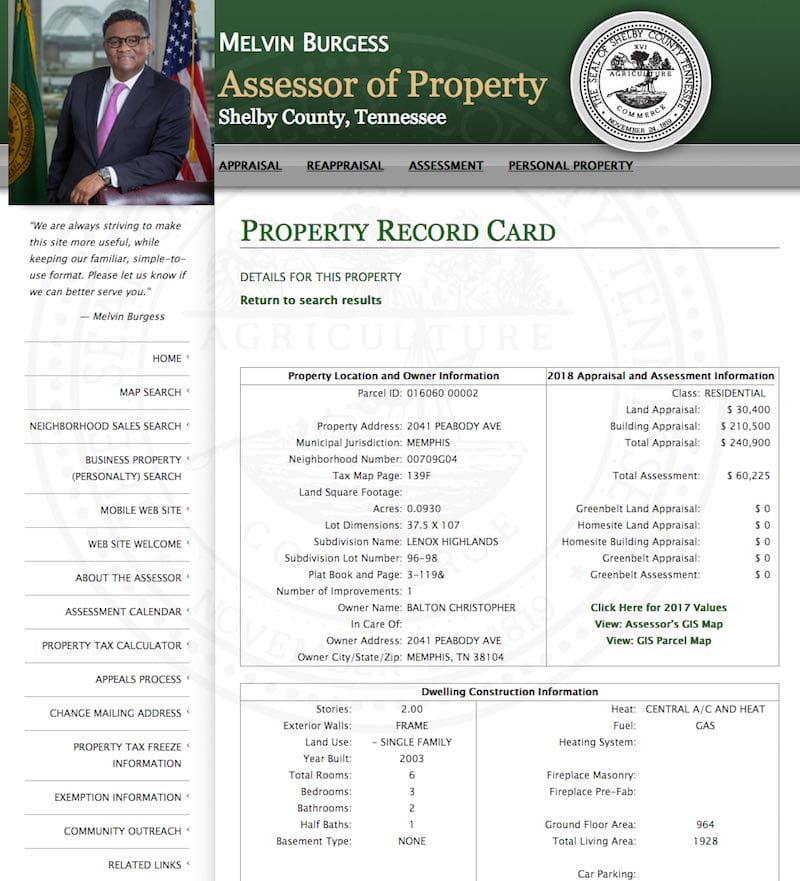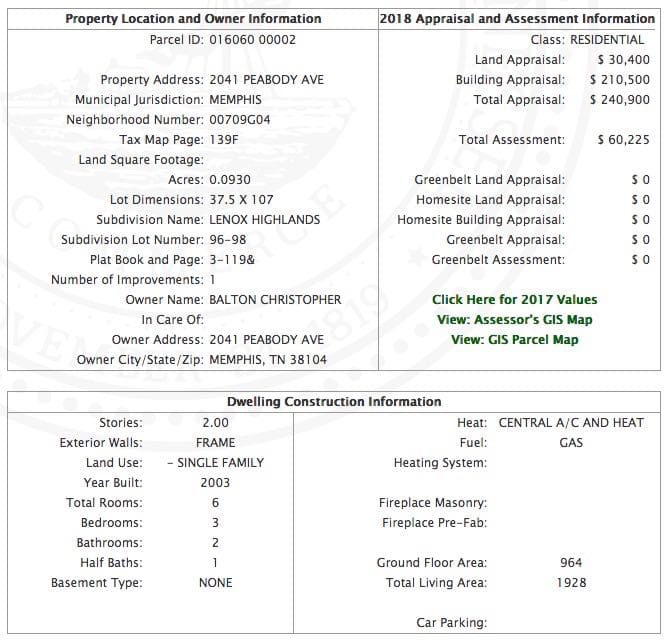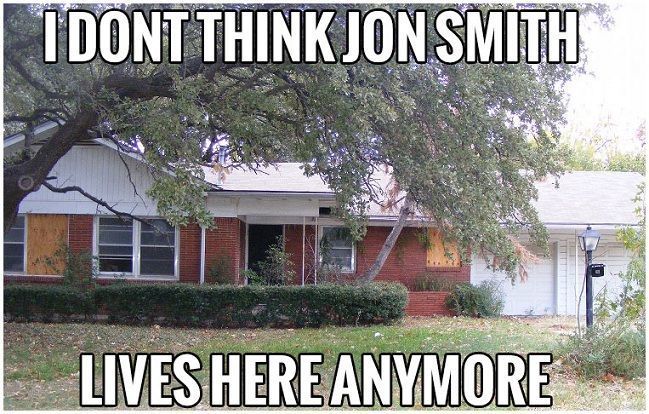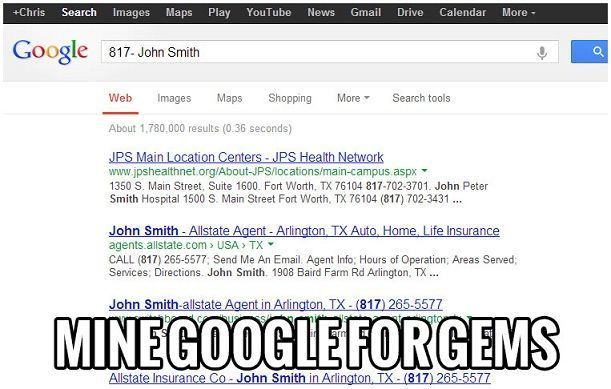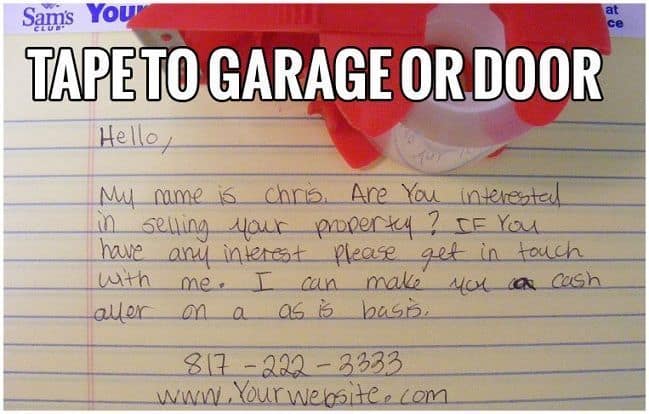So You’re Thinking About Being a Property Locator in Memphis?
There are a lot of names for the same gig… Property finder, bird dog, real estate apprentice… But ultimately, it’s just someone who wants to make money finding great off-market property deals for a real estate investor, like us. We buy houses in Memphis TN and nearby areas and we’re always looking for more deals.
At Moses Buys Houses, we’ve worked with many local property locators who bring home an extra $2,000-$5,000 a month, so we’ve put together a Simple Guide for Property Locators in Memphis looking to get their feet wet in the industry…
To be a Successful Property Locator, Here Are a Few Quick Tips to Start:
You need to find actual deals!
Seems like a no-brainer, right? Do not submit listings from the MLS (properties found on Zillow, Trulia, Realtor, etc.) or FSBO/for sale by owner sites. Anyone can log onto a site and do a search, so you need to bring value by finding diamonds in the rough, or off-market properties, which are not on public sites.
You get paid for each deal closed!
Again, this is pretty straightforward, but we like to be 100% upfront with everyone we work with. Sometimes you can drive around and find 2 deals on one block. Other times, it will take more effort to find good properties. In order for you to feel safe that’ll you’ll be compensated for the deals you brings us, we’ve put together a Property Locator agreement that protects you and us (not all investors will put their deal terms in writing). You want to make sure you get paid for your hard work and we want to make you keep bringing us good deals!
What’s the catch?
Let’s be clear: this is NOT a get-rich-quick scheme. Anyone who tells you differently is probably overselling and will likely under-deliver. This is a great gig that you can do in your free time for extra income.
Will you make $2,000 your first day searching? It’s possible, but probably not.
Can you find AT LEAST one good deal every two weeks? Every week? Absolutely. As long as you stay committed, keeping an eye out for distressed properties and talking to people, you’ll start finding potential deals!
Being a Property Locator is a great first step to becoming a real estate investor yourself. Now let’s get started!
Here’s What We Want…
We want Property Locators to find properties or owners that are DISTRESSED. Distressed means that there is a problem or situation that might allow us to buy a property for less than market value.
We need Property Locators to keep their eyes and ears open for potential opportunities. Property Locators let us know when they see a distressed property or hear about a distressed owner. And we pay them up to $2,000 if the information leads to us purchasing the property.
What kind of houses do we like to buy?
We buy all types of houses. But, here are some guiding principles…
- 2+ bedrooms (ideally 3 to 5 bedrooms)
- 1.5+ baths (ideally 2+ baths)
- At least 900 sq. ft. (preferably 1,200-2,500)
- Covered park is great, but not necessary
- Homes that need some work
- Mostly single family homes, but 2-4 units and small multifamilies (under 30 units) are of interest as well
When judging houses, we need to consider the After Repair Value (ARV) — that is the price we can likely sell the house for AFTER fixing it up. Our target ARV has a pretty wide range, depending on what we do with the property and the location…
- $50k-$100k for rentals
- $70k-250k for retail flips
- Overall, there’s a good sweet spot in the $75k-$120k ARV range
Now remember, this is what these properties would sell for, to end buyers… The property would need to be purchased at a discount so there’s enough room to cover closing costs when buying and selling the property, rehab costs, monthly holding costs, expenses and profit.
Where do we buy houses…
Anywhere in the Memphis, Bartlett, Cordova, Germantown, Collierville, Arlington, Lakeland, Southaven MS, Olive Branch MS and other nearby areas. (Below, we’ll tell you about our favorite zip codes.)
How to get involved…
Any time you are out and see or hear of something that might interest us, let us know. That minute it takes to jot an address down could be worth $1,000.
Make a game of it. Try to do as many as you can a day. The more leads you send us, the greater chance one will earn you $2,000. Keep your eyes and ears open for opportunity!!
OK, so where should a newbie Property Locator begin?
The Best Beginner Strategy is Driving For Dollars
One of the best ways for a Property Locator to get their start finding distressed properties is driving for dollars.
Driving for dollars is a real estate investing strategy that means driving through neighborhoods to look for properties that may turn into your next deal. Normally, you drive and search for houses in need of significant repair. Some of the best deals out there can be found before they are even listed on a website!
Do this, get your boots on the ground, and learn about the neighborhoods in your market area. When it comes to driving for dollars, the key to your success is knowing what to look for and paying attention to the details.
This is a guide intended to help aid you in locating distressed properties by “driving for dollars” from steps A to Z, from locating properties to tracking down the owners.
Define a market area
Before stepping foot in your car, it’s a good idea to establish an area to drive. Plan your route and ALWAYS drive safe and slooooow. Pick one area and stick to it for the day.
When you spot a potential property… Pull over, if it’s safe.
Park. Then investigate. Nothing is more important that this!
The top 10 zip codes with cash buyers in Memphis TN are:
- 38127
- 38128
- 38118
- 38109
- 38111
- 38122
- 38016
- 38141
- 38117
- 38018
And the top zip codes for cash buyers in Desoto County MS are:
- 38654
- 38671
- 38637
Here is a handy map that shows you which parts of Memphis and North Mississippi we like buying homes in. This is just to give you a general idea. Some parts of Memphis are really “street by street,” so it all comes down to the individual deal.
Ultimately, we’ll take a look at any property you find. It’s just that these areas have quite a lot of activity with cash buyers, so they’re “hotter” markets for us to target.
Study the target areas
Each area will have varying exit strategies: from wholesaling to wholetailing, from fix-and-rent to fix-and-flip, from subject-to deals to lease option deals. Ultimately everything starts with finding good deals! We adapt the exit strategy depending on the details.
For example, it’s less likely to find a distressed property in a nice neighborhood, but those houses have a better chance of being fix-and-flips, than a rental. Similarly, you can drive through a worse neighborhood, where everything is basically a rental, so no homeowner would want to buy and live there, but an investor/landlord might like the rental income.
There are many factors that go into picking good areas to search such as: tax assessed value, house age, crime rates, etc.
You can use websites like www.city-data.com and search for median house values, crime rates, and tons of other data and queries. Once you have your target area defined, make a list of subdivisions within that area you would like to drive.
A good way to keep track of where you’ve driven is to use an app that tracks your route and mileage, such as TripLog.
What You’ll Need to Drive For Dollars
Once your list of subdivisions is complete, you have a few options on how to keep track of properties you find.
- Techy Route:
- Smartphone
- A few handy apps
- Old School Route:
- Camera
- Print out a spreadsheet
- Pen or pencil & pad work too
Techy route
Let’s discuss the easy route first, using your smartphone’s camera and apps while you’re driving around and leaving the data entry for later…
Homesnap – this free app allows you take a picture of a property and it pulls up a lot of relevant info, like bedroom and bath count, square footage, etc. and saves the info in the app. Since this app uses GPS, it can sometimes be wrong on the first guess… So double check the address (you can correct it if it’s wrong).
Landglide – this subscription app similarly allows you to pick home off of a map and pulls county info on the property, such as owner information.
Other paid apps that allow you keep track of properties, pull info, and even send postcards, include: The Driving for Dollars App, Driving for Dollars, Deal Machine and Letterfly.
If you want to graduate into wholesaling and start spending on marketing, these apps can be a good way to start setup direct mail campaigns on the fly (more on that later). But to start, you can just pass along the info to us and we’ll handle the marketing and negotiating!
Old school route
Make a simple Excel or Google Sheets file to print out for use in the field (as shown in the image below). Alternatively, make a grid on paper. In addition, bring a camera or smartphone to take pictures of any distressed and or vacant properties you may find. Note in your print out worksheet which camera pictures are associated with a given house.
Take photos
It’s always best to take at least six photos of each home:
- Front
- Left side
- Right side
- Rear (if possible)
- Picture of the street with the house on the left side of frame
- Picture of the street with the house on the right side of frame
If the house looks abandoned or vacant, taking pictures through the window helps too, along with any detail shots of problem areas: roof, exterior trim, windows, cracks, etc.
ALWAYS take pictures of the properties! Try to take the “best” worst picture of the property as possible, this will come in handy when we start marketing to the owner.
Street analysis
The key component when driving for dollars it to be vigilant and observant at all times. In general, the best time to drive is from 10:00 a.m. to early afternoon during the weekday. At this time people are typically at work and it makes it easier to take your time driving through the subdivision.
This process becomes easier if you are driving for dollars during holidays, like Halloween, Christmas or a trash pickup day. Why? When Christmas or Halloween is approaching a good portion of the neighborhood will have decorations of some sort on display.
Likewise, during trash pickup day, garbage canisters will be out on the streets.
Vacant properties stand out like a sore thumb, as they won’t have decorations during the holidays or a trash can out front on pick up day.
Something to keep in mind, because this happens a lot in Memphis… if you find a street where 5 out of the 7 houses on the block are boarded up, that’s probably not a good street. Think of it this way, even if we bought and fixed up one of those houses, would YOU want to live on that street?
Try to find diamonds in the rough! The worst house on a good block is a good rule of thumb.
Clear Cut Signs of a Distressed Property
When driving for dollars there are several “red flags” you should pay attention to. For example:
- Tall grass and overgrown vegetation
- Boarded up or broken windows
- Mailboxes filled to the brim
- Code Enforcement or other notices taped to the door
- Piled up newspapers
- Deferred maintenance
Look for houses that clearly need some work done, such as rotted wood trim…
Or an old roof…
Once you get used to it, you’ll start noticing potential deals all over the place!
Research the Distressed Properties
As you drive the neighborhoods and locate distressed properties, record the address and any additional notes in your print out worksheet or on your phone.
After you finish your drive, return home and research the properties you located on Shelby County’s Assessor of Property’s office page.
There are two ways to search the records, an older simple system, the Real Property Search, where you can enter the house number and street name.
Once you hit search, you’ll pull up property detail records such as these…
And a newer more powerful system, is the Shelby County Property Assessor’s GIS Map Search, with a map, layers, and search functions. Here is that same property on this system.
Take some time to play with both until you get the hang of them.
Ultimately it’s up to you which you use. The information is the same.
Go through the list of distressed properties you jotted down
During the research phase you will want to filter out properties that do not fit our criteria.
For instance, if you see that deed dates 15+ years back, there’s a good chance the owner has built up equity. Equity is great! It gives us room for negotiation. Or maybe it’s too small. Or it only has one bathroom.
Once you have selected all the properties that fit the criteria, create a final list. Make certain that the current owner is not a bank, if so you will likely need to discard it.
Just as a random example, let’s say you come across a property and pull up its info on the Assessor’s site.
The total appraisal is estimated at $240,900 for the tax year 2018. This usually isn’t a very accurate way to determine value, but it gives you a starting point as to what the county estimates the land and building is worth. You can also tell that it’s an “owner occupant” because the Owner Address matches the Property Address – so the owner lives there.
If you were to click on See Sales Data for this Property, you’ll pull up the info below. You can see that the last Date of Sale is from April 2010 and they purchased it for $219,000.
Plus, you can research properties in the field with your smartphone. From public sites like Zillow or Realtor, you can find other general info about the property. Like if you type in the address for the property above, you’ll find all these details and more: 4 beds, 2.5 baths, 1,800 sqft, built in 2002. And Zillow estimates that the property is worth around $292,491 (again, not always accurate, but it’s a ballpark data point).
Finding the Homeowner’s Contact Info
Once you locate a good property, we’ll need to talk to the owner. You can always do some additional digging on the owner on public sites, such as:
There are cheap and paid services as well that can pull up an owner’s phone, email address, social profiles, etc.
What if you’re unable to find the owner?
The more difficult it is to find the owner, the less competition there will be and that means more opportunity for you.
If you drive for dollars long enough you will stumble upon circumstances where the owners’ address is not available. This creates a problem – how will we get in touch with this lead if you don’t have their information? There are a few red flags to look out for that indicate additional research will be required to find the owner address.
Some of the more common situations are:
- Scenario 1: You drove by a property that was clearly vacant (i.e. boarded up windows); however, the assessor’s office displays the property is still owner occupied. This is typically due to the appraisal district not yet updating their records, which can sometimes lag behind 3 to 4 months. For example if you drove by a property that looks like the image above, and your property info indicates the owner still lives at that property, you need to continue your research to find the owners address because obviously they no longer live there.
- Scenario 2: Returned mail or postcards that were returned due to failed delivery.
- Scenario 3: When you research the property on your local county site and you discover the owner address section contains no data. This may come in the form of being completely blank or display “No Data” or perhaps a place holder such as “Current Owner”.
Use Deed of Trust and Public Records to track down owners
This is the first step in the process; we will pull data from public records and use it to mine Google for owner information. When the county office lacks sufficient information you will use the Deed of Trust recorded in your county’s public records to track down the owner.
To find your county’s public records simply Google search “[your county name] public records.”
For example, in Shelby County you can use the Shelby County Register of Deeds website. Or if that’s not enough, here’s a list of all the public information available in Shelby County.
The deed of trust will display all parties involved within the transaction, from grantors to individuals with power of attorney. This data is invaluable when attempting to locate the owner of the property.
Dig through Google for data
Once you have searched public records it’s time to take the owner (and any of the grantors names recorded in the Deed of Trust) and start plugging them into Google search. For starters try searching their full name as displayed in the Deed of Trust.
If that yields few results try combining their name + local phone area codes (as shown in the image below). This can often reveal:
- Landlines or Cell Phone Numbers of the Owner or Grantors
- New Address of the Owner
- Any Websites they own
- Company PDF contact sheets
- Social media profiles
If you are unable to locate the owner, but able to track down one of the grantors, you can often get the contact information you need by reaching out to them. Sometimes you will find PDFs or About Us profile sections on company websites and you can use this for updated contact information. If you find a website they own, you can do a “whois” search on the domain and retrieve information that way as well.
Skip trace the homeowner
If all of the above fail, you might consider utilizing a Skip Trace service. If you take some time to research using the methods discussed earlier, you should not need to use a skip trace 9 times out of 10. Skip tracing is a paid service, but can lead to some of the best deals.
You can expect to pay anywhere from $0.30 to $20 per skip trace depending on who is doing the job and what services/technology they have access to.
Leave a note on the property
Tape a note to the property’s front door and or garage in case the owner returns to their abandoned property. You can bet if they find a note taped to their garage or front door, they will read it. You never know when the owner may return to collect mail or check on the house.
You can write the notes manually if you would like, or you can print out a stack of them using a handwritten font. Either way, bring a stack of them with you into the field.
Exchange business cards with neighbors
Oftentimes neighbors are willing to divulge information on the abandoned property owner. After all, no one wants a vacant property sitting next door and dragging their property values down with it. If you see a neighbor outside strike up a brief conversation, hand them a business card, and many times they will provide helpful information.
You’re probably thinking “But… what do I say?”
Take a deep breath…
It can be overwhelming to talk to people about your entrepreneurial real estate dealings as a Property Locator, but the more you do it, the easier it will get. Trust us, everyone starts off the same way.
To start off, you can simply tell everyone you meet something like this…
“I’m working with a real estate investor who is looking to buy properties as-is for cash — if you know someone who needs to sell fast and doesn’t want the headache, or cost of listing it with an agent, or fixing it up, let me know! They especially like 3-bedrooms-and-up houses that need work.”
But what if they ask me something I don’t know the answer to? You can play the “what if” game all day and not get anywhere. There’s no shame in admitting you don’t have all the answers. You can always just kick the can down the road, until you are more seasoned…
“Good question. I can definitely look into that for you! What’s the best number or email to get back to you at?”
We’re big believers in learning-by-doing and can help you along the way. If you have questions or would like to become a property locator for us, we’re always available to help — just reach out.
Be careful with bank-owned properties
How do you determine if a subdivision is potentially REO- or bank-owned property heavy before driving it? The answer is by utilizing your County Records website. You can quickly sort through a subdivision and get a rough idea.
As illustrated below, you can view the list of individual properties with the subdivision along with the owner’s name (in the case below, Bank of America).
You can quickly look through the subdivision at a glance and determine a rough density of REOs. While bank-owned properties hurt home values for a retail flip scenario, it might open the door to other creative real estate financing techniques, like lease options or subject to deals.
One thing is clear — we will likely not buy a house from a bank. Why is that? Well, we don’t usually like buying from banks because they’re not as flexible with creative real estate financing techniques — they can only do what computer models tell them is okay. Plus, there’s too much competition from other investors and the homes tend to not have enough equity to get a great deal on them.
Alternatively, for a rougher idea, use Zillow. Just select the Foreclosure, Foreclosed and Pre-Foreclosure options to determine areas of high concentration.
Should You Be a Property Locator… or Just Jump to Wholesaling?
How far do you want to go? Is being a Property Locator a first step towards a bigger real estate investment career, or are you just looking for some extra cash on the side?
Are you ready to wholesale deals yourself? Do you have the time and money necessary to market to sellers? Would you feel comfortable negotiating with sellers and getting properties under contract yourself?
There’s obviously more money to be made in wholesaling than being a property locator, but there’s also a lot more work and costs associated (you need to spend money on marketing). The average cost per deal for many real estate investors is around $2,000.
If you’re new to real estate, we recommend starting off as a Property Locator to get your feet wet in the industry and gain confidence.
We’d be happy to continue working with you on your real estate journey, but always feel that starting off as a property locator is best first step.
Final Tips on Being a Property Locator in Memphis
There are lots of options on how you can bring in more seller leads as a Property Locator. It’s only a question of how far you want to take it. Here are a few more things you can do to get people bringing you deals — that you can then bring to us 🙂
You can also dig through probate records, code violations, tax liens, evictions, etc. to find motivated sellers. There are a lot of avenues for finding good deals and you’re only limited by your time and drive.
Looking for something with a much lower learning curve, like driving for dollars, here are a few more ideas…
Get some “I Buy Houses” business cards
Check out websites like YellowLetters.com or Vistaprint.com for cheap investor business cards. Order yourself some to get started.
Talk to mailmen and deliverymen
When driving for dollars keep a look out for mailmen, deliverymen of any sort… even Uber drivers. Approach them on their route, briefly introduce yourself and your business and hand them a card that explains what we’re looking for. Explain to them if they find a house that fits your criteria, and you are able to close on it, they will collect a handsome referral fee — it’s up to you how you want to split your fee with them!
Mailmen and deliverymen know what’s going on in a neighborhood better than you do, since they drive these subdivisions every day. Get to know a few of them and you will be richly rewarded.
Make your car a lead magnet
How about sticking a vehicle magnet on your car? Get ready for people to come up to you at the grocery store and Walmart parking lot.
Or you can be a lead magnet yourself
Or how many people do you think would tell you about the rundown house across from them, if they see you wearing an “I Buy Houses” t-shirt like this while running errands?
For property locators that have a track record of finding us deals, we can definitely support your growth by supplying you with these extras, giving you your own tracking number, etc. The better you do, the better we do — and vice versa.
Need more ideas and guidance on finding distressed properties?
Check out these videos to learn more about driving for dollars and how to spot great deals as a Property Locator. Some of the people in these videos are successful wholesalers or cash buyers themselves, but the principles are still the same. It all starts with spotting a potential deal…
1. Mike Nelson takes his son with him as he drives for dollars looking for vacant properties.
Here’s his go-to guide:
- Pick your one area and focus on it.
- Look for uncut grass or overgrown bushes.
- Check for no vehicles in the driveway and a house that looks outdated.
- Get out of the car and talk to neighbors.
- Ask questions about the property and who lived there.
- Look up property addresses in the county tax assessors office – Are these absentee owners or do they live there?
Insider Tip: Skipping tracing is when you find the owners of a property who have essentially “skipped town.” You can often find this at the county tax assessors office. Then you can reach out to the owners and tell them you are interested in the property.
2. Frank Chen knows that driving for dollars is an affordable way to look for deals, train your eyes, and get familiar for neighborhoods.
Questions to ask when out driving for dollars:
- Which house doesn’t have a trash can out?
- Is the lawn unkempt?
- Are there HUD notifications on the windows?
- Is the mail overflowing?
- Is there a manual lock box?
Insider Tip: Give your business card to the mailman in the neighborhood and tell him you have a referral program for finding properties.
3. This House Flipping Ninja drives slowly through low and middle income neighborhoods to look for properties.
Signs that a property is vacant:
- There is debris in front of the house.
- There are locks everywhere on the house.
- You see a notification taped to the door.
- The house looks in worse condition compared to surrounding houses.
Insider Tip: Use the county tax assessor website to find the billing address for the property. This will help you locate the most recent property owner.
4. Michael Jake looks for the worst property in a good neighborhood. He often uses the weather to help him identify vacant properties.
Signs that a property may be empty:
- There are no tire tracks in the driveway after a snow.
- There are no window treatments.
- The gutters are falling off.
- You see newspapers stuck in the door.
- The paint on the house is peeling off.
- The roof looks beat-up.
- There is debris on the front porch.
Insider Tip: The property owner may not know the current condition of the house. Send a postcard with a picture of the property to the owner. This may turn a property owner into a motivated seller.
5. Todd Bockman drives up and down every street in a neighborhood and even gets out to walk around the house if he sees a vacant property.
This investor is looking for the following:
- A house with no curtains or blinds.
- A house that is empty on the inside.
- An electric or gas meter that is missing (If there is no electricity, it is likely that the house is vacant!)
- An overgrown yard.
Insider Tip: If the house is boarded up, there is probably not a loan or a mortgage on it. This is an opportunity can get a good deal on the property.
In Conclusion
Thanks for reading this guide on how to be a successful Property Locator in Memphis TN. Hopefully you now feel like you have a good understanding of what it takes to find great off-market deals in the Memphis area.
With a little bit of legwork and persistence, you will discover some gems when driving for dollars and the other simple techniques outlined here. Take action and you will reap rewards.




